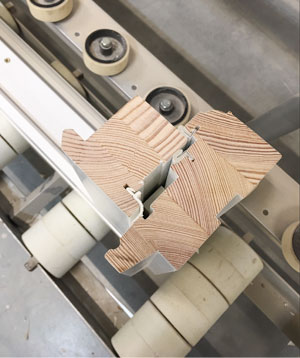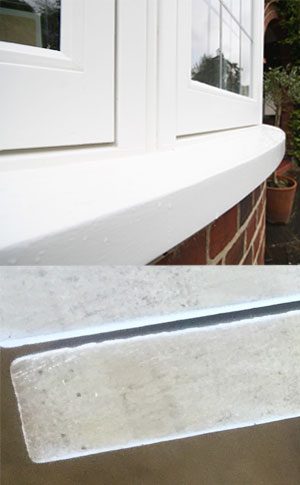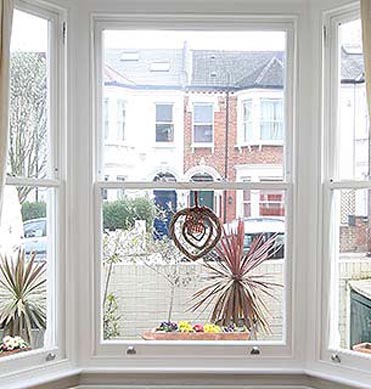Timber Window Specifications for London and Surrey
CHOOSE THE RIGHT TIMBER OR TIMBER ALTERNATIVE, GLAZING OPTION AND PAINT FINISH FOR YOUR UNIQUE PROJECT
To help make your decision-making process a little easier, we’ve outlined the summary specifications of each timber, how to get the most out of them, and the circumstances in which they’d be the right choice for your project.
Every quotation that we raise will have the exact specifications listed, and dimensions and drawings are available for all products on request. While we’d love to go into the details of the manufacturers and specifications, there are simply too many on the market to list on our website!
Below, we’ve outlined the high specification that we insist upon from our approved manufacturers. You can also read about the upgrade options, should you wish to further extend the performance of your new timber windows.

HARDWOOD AND REDWOOD
Hardwood and redwood are ideally suited to sash windows and casement windows. Both timbers suit different applications and have varying life spans and maintenance cycles. As a rule of thumb, hardy redwods such as Nordic pine and Accoya are suited to windows, especially if they are to be painted. On the other hand, hardwoods such as sapele, meranti and oak have gorgeous tight grains that are commonly used for windows destined to be varnished.
Engineered redwood and Accoya are less likely to twist and warp due to their cell structures; as such, they hold their paint well. This is why 80% of 20th century sliding sash windows are made from Nordic pine.
Hardwoods can last longer, but require more maintenance. They’ll need more frequent painting cycles due to resin bleeds and are prone to twist and warp a little more. Typically, redwood is more economical (with the exception of Accoya).
Before quoting, it’s likely that we will ask some questions to determine the best hardwood, redwood (or combination) for your specific needs.

ENGINEERED LAMINATED TIMBER
To prolong the painting cycle and life expectancy of your frames, hardware and double-glazed sealed units, we’d recommend installing dynamically stable frames. They won’t twist or warp, and are created by taking the sawn timber through an additional process called cross grain lamination. This involves the timber being cut into strips, then bonded back together with the grains facing opposite directions.
The result is a counteraction of the natural twisting process, as each of the bonded strips will move in opposite directions. The high-tech bonding adhesive used in the ‘lamination’ process is actually stronger than the timber itself, and acts as an additional moisture barrier.
This process also makes the frames 30% stronger than standard sawn timber, while twisting and warping are all but eliminated.

DOUBLE OR TRIPLE GLAZING
Our approved network of manufacturers offer both double and triple glazed options. That said, and contrary to popular belief, triple glazing is only marginally better for heat retention and no better for soundproofing. Research actually shows that a 16mm air gap between two panes of glass is the optimum cavity width for heat retention in your home.
The real influences on thermal and acoustic performance occur when invisible metallic coatings or PVB interlayers are added to the inner and/or outer glass panes. These coatings either reduce or increase solar gain (depending on what you need!). In addition to minimising heat loss, these can also help to reduce condensation and improve security and sound proofing.
The general consensus among industry specialists is that argon gas-filled standard triple glazing, with one low-e glass pane, adds unnecessary weight and cost to opening sashes. Similarly, there is a negligible performance gain compared to high-performance double-glazed units.
See performance upgrades to better understand the different types of glass and various coatings.

TIMBER WINDOW FINISHES
FACTORY VS. SITE FINISH
Independent research has shown that good quality, factory-finished exterior joinery has up to twice the service life of standard joinery windows (if best practice design and manufacturing principles are followed).
One of the secrets to long-life performance and minimal servicing is to glaze and paint the windows in a controlled factory setting rather than on site. All of London Timber Windows and Doors Ltd’ approved manufacturers factory-finish each window to the highest standards, using only high-specification preservatives, paints and sealants.
Find out more about the life span of different timbers below.

PAINT FINISHES
Standard joinery is usually painted with one undercoat and two top coats. Our premium joinery, however, is specified at four coats or three thicker coats. A four-coat process often comprises either one undercoat and three top coats or one timber preservative coat, one undercoat and two top coats. Painted using the premium paint product Teknos microporous paint, it means that that your joinery will not need to be repainted for at least 7-12 years, compared to the standard 2-4 years.
This high-performance paint will degrade at 50 microns per year (each coat equates to approx. 250 microns) and is heavily pigmented to prevent harmful UV rays from degrading the lignin on the timber surface - essentially performing as a sun screen.
Microporous paint allows the timber to breathe because it’s not oil-based. Your windows can be single colour, dual colour, or varnished. If you do decide to opt for varnished frames, we recommend that the frames be re-varnished every two-four years to protect the timber.
Colour-wise, we invite you to select any RAL or Farrow & Ball colour.
Our top tip: Extend the life and look of your paint with an annual sponge down of your frames with a Teknos cleaner and protector solution. It will clean and protect your timber, much like washing and waxing your car.

INTERNAL FINISH OPTIONS
The first and most popular option is what we describe as ‘fully finished’. This involves the installation team completing all the internal finishing work that might have been impacted by the installation and undercoating or painting of the internal architrave and sills. It also includes restoring any damaged plasterwork for you to decorate. Any further decorating, such as wallpapering or painting, is left to you so that you can match to your existing decor.
The second option is called a ‘first fix’. In this case, the installer will fit the window into the opening and finish off the job externally, but leave all internal finishing such as plastering and installing architrave or tread boards to you, your builder or your preferred decorator.
Any cementing, rendering or pebble dashing externally is always completed by the approved installer, regardless of which internal finish option that you choose.

TIMBER LIFE SPANS
Factory finishing to the highest technical design and material standards is key to an extended lifespan. Our preferred redwoods include laminated Nordic redwood and Accoya, due to their tried and tested long life expectancy and ability to hold paint well.
The most popular long-life hardwoods include laminated oak and sapele; these are ideal for staining, varnishing and painting. Should you wish your timber to last longer than a 60-year life span, opt for Accoya. Properly seasoned and laminated hardwood can last a little longer than redwood, and Accoya – which is a specially treated redwood – is one of the world’s longest lasting timbers.
Accoya is very stable and holds its paint incredibly well: when properly maintained, it can last lifetimes rather than decades.

TIMBER ALTERNATIVES
In the last few years, we have seen an emergence of thermally-efficient aluminium which encapsulates the features of slimline deco period steel windows.
There is also a new breed of uPVC flush casement and sliding sash windows that look more like timber than timber! They are sympathetic to period properties and are even approved by many planning departments in conservation areas. Take a look at our gallery of approved agent installations to see for yourself.
As a rule of thumb, uPVC and aluminium alternatives typically cost approximately 30% less than timber or steel.
If you have any questions about whether these are the right choice for you, always feel free to give us a call.

YOUR FREE QUOTATION INCLUDES
A ‘no-salesperson’, no-obligation emailed quote
A free home visit, if required (for those in London and Surrey)
CAD drawings with detailed specifications for each quoted product
Realistic before & after photo simulations, if required




FOR LONDON AND SURREY
TIMBER WINDOW PRODUCTS
- SLIDING SASH WINDOWS
- CASEMENT WINDOWS
- BAY WINDOWS
- SPECIFICATIONS
TIMBER DOOR PRODUCTS
LOOKALIKES & ALTERNATIVES
- SITEMAPS:
- SITEMAP HTML
- SITEMAP XML
- URL LIST
- ROR
- Privacy Policy
© Copyright 2022 London Timber Windows and Doors Ltd All Rights Reserved. Company number 10273992

